2021 Washington Football Team Fantasy Team Outlook: Terry McLaurin Could Thrive with "Fitzmagic"
Coaching
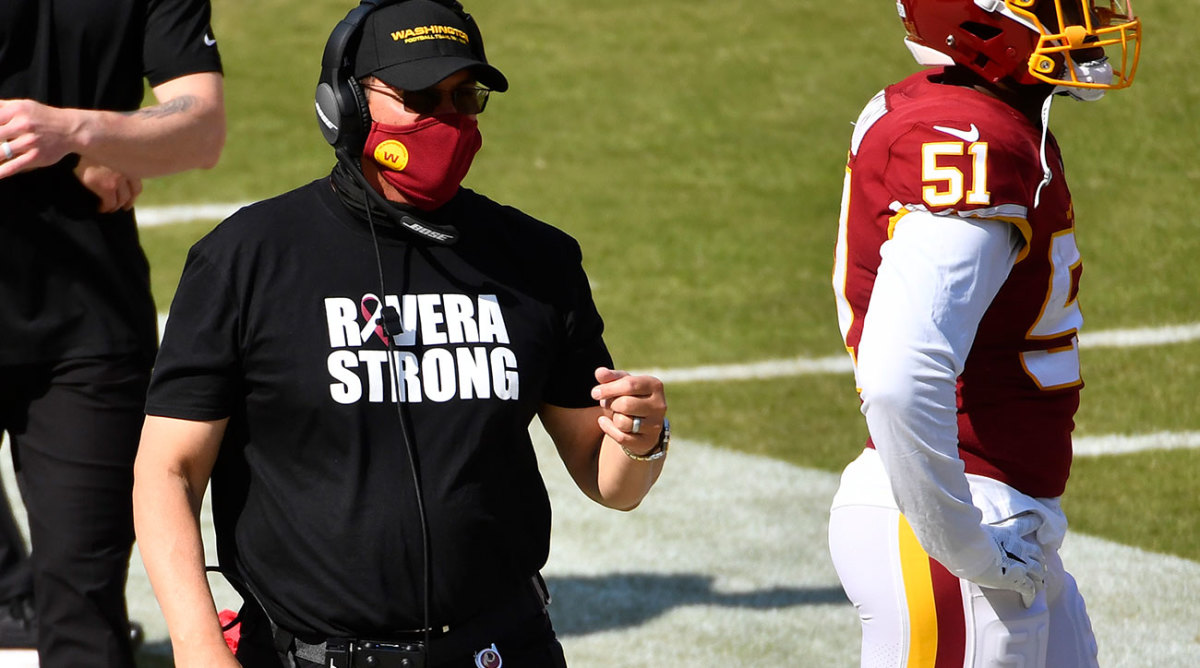
Washington brought in Ron Rivera to run the franchise in 2020 after a solid run over eight seasons with the Panthers (76-63-1), which included four playoff appearances. His highlight year came in 2015 (15-1 with a loss to Denver in the Super Bowl). Washington won the NFC East in his first season despite a 7-9 record while showing improvement on both sides of the ball.
In addition, Rivera worked as a defensive coordinator over six seasons for the Bears and the Chargers while having 24 years of coaching experience in the NFL.
Scott Turner returns for a second season as Washington's offensive coordinator. His offense finished 25th in points scored (335), 71 more points than in 2019 (266). Washington only moved up one notch to 30th in yards allowed. Turner held the same position over five seasons with the Panthers and Vikings.
After sitting out two years after losing the head coaching job for the Raiders, Jack Del Rio ran Washington’s defense in 2020. They moved from the bottom of the league rankings to second in yards allowed and fourth in points given up (329 – 106 fewer than 2019).
Over 12 seasons as a head coach, Del Rio went 93-94 with three playoff appearances. His best success came in 2005 (12-4), 2007 (11-5), and 2016 (12-4). In 2000, he helped the Ravens win the Super Bowl as the linebacker coach for the Ravens. Del Rio has 21 years of experience coaching in the NFL.
Free Agency
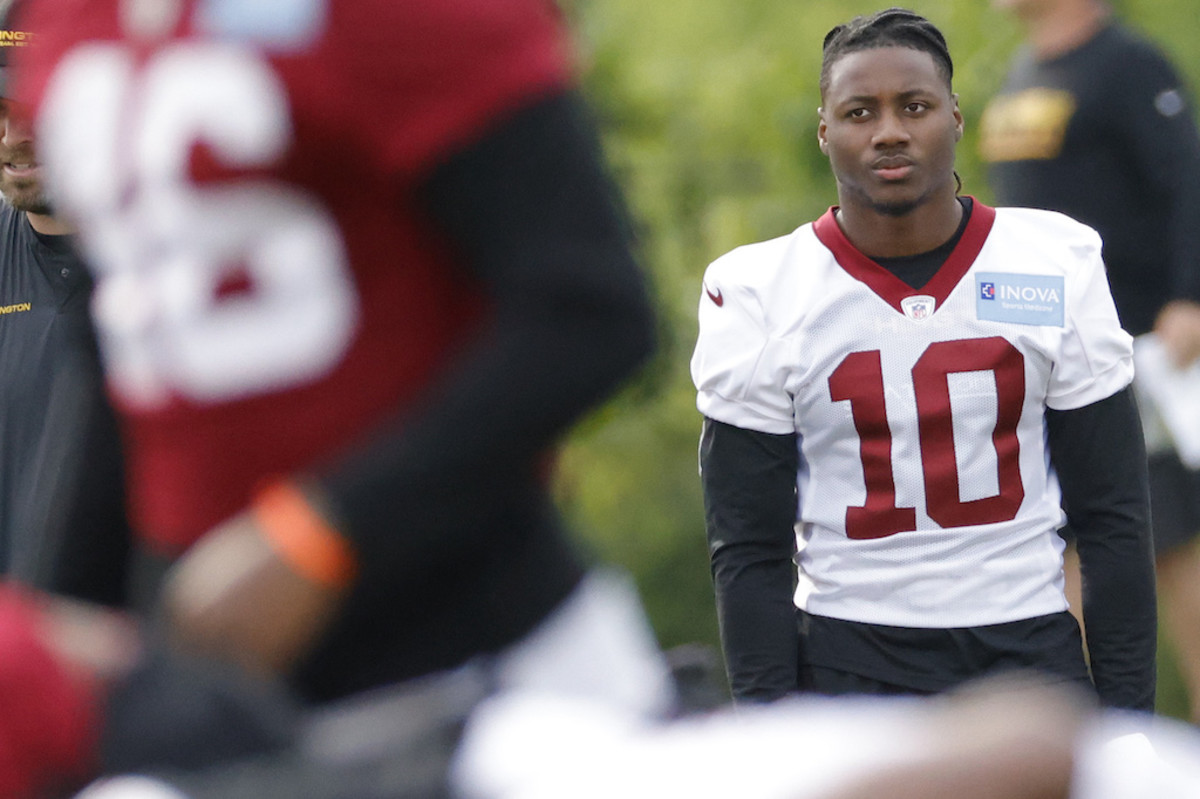
Washington’s top two signings in the offseason were CB William Jackson and WR Curtis Samuel.
Jackson has been up and down over the past three seasons. When at his best, he held wide receivers to short yards per catch while making some mistakes over the long field.
Ron Rivera drafted Samuel in the second round in 2017. His play and production improved each season in the league, highlighted by the 24th wide receiver ranking (212.10 fantasy points) in PPR leagues last year. Samuel adds value as well as a change of pace option out of the backfield.
The quarterback position remains an area of need, leading to Washington signed Ryan Fitzpatrick as a bridge player. He made the most of his opportunities off the bench over the past three seasons in Tampa and Miami, leading to some impressive games and improved accuracy.
The defense lost CB Ronald Darby, LB Kevin Pierre-Louis, and DE Ryan Kerrigan.
Darby had an entire season of starts for Washington for the first time in his career. He continues to have risk in big plays and touchdowns allowed, but his play did improve in completion rate against.
Kerrigan gave Washington eight impressive seasons rushing the quarterback. His best play against the run came from 2016 to 2018. His playing time slipped over the last two years, leading to his move to Philadelphia.
Pierre-Louis saw the most playing time of his career in 2020 as a rotational player on passing downs. He’ll help defense kick returns while having a low ceiling in coverage (five touchdowns allowed last year).
The only other player of value-added to the roster was WR Adam Humphries. After three productive seasons with Tampa as a possession receiver, his game faded in Tennessee over the past two seasons while battling some injuries. Humphries won’t score that often, but he will help move the chains on third downs.
Draft
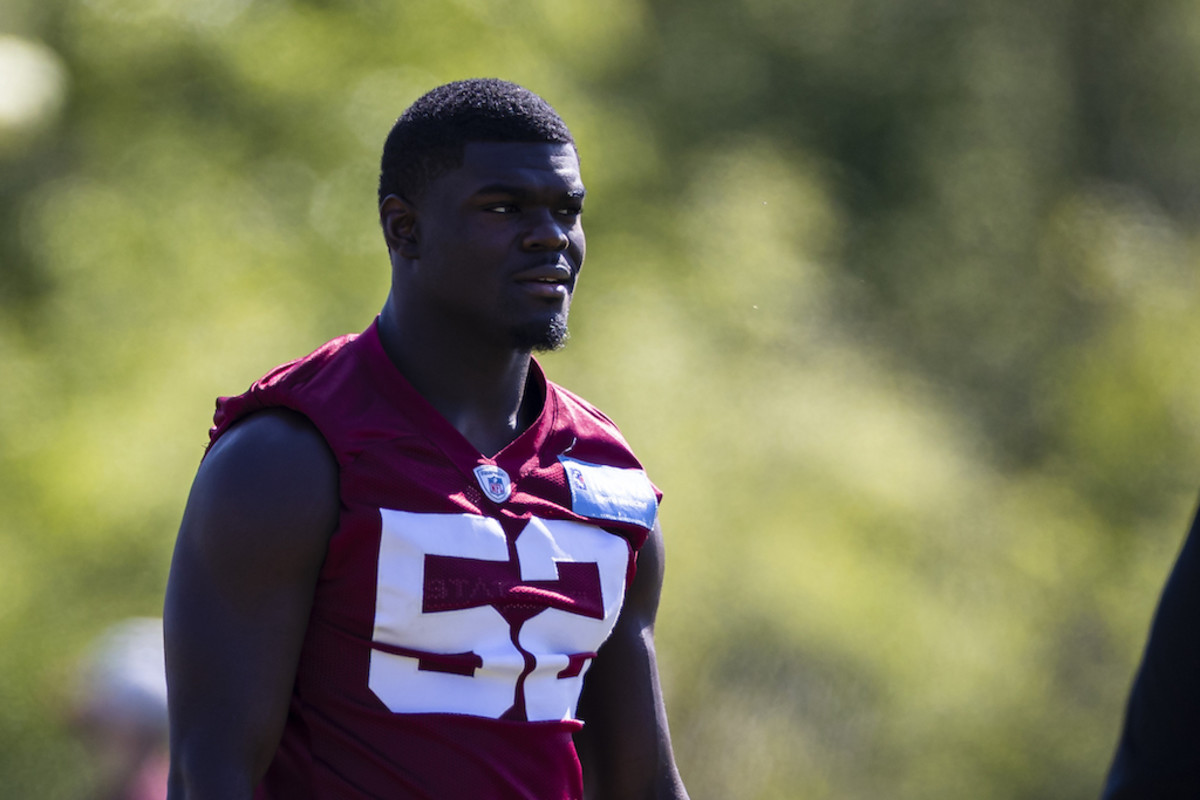
In the first round of the 2021 NFL Draft, Washington focused on their defense with the addition of LB Jamin Davis. His experience and success are limited, but he brings an excellent feel and understanding of his role in a defense. His flow to the ball is top-notch, with the talent to defend in the passing game. Davis can struggle with the big bodies in traffic, which requires him to get stronger.
Washington invested in tackle Sam Cosmi in the second round. His game projects well on the move in the run game, and his foundation skill set puts him in the correct position to handle his assignments. His thinking style loses a tick after the snap. To push higher, Cosmi needs to fire off the ball with more fight and better reaction time. His base looks to be trailing at this point of his career.
With two selections in the third round, Washington drafted CB Benjamin St-Juste and WR Dyami Brown.
St-Juste looks the part of an upside press corner with the talent to support the run. His challenge comes from his technique and reads vs. pass routes. He has a looker feel that puts him on his heels too often against weaker receivers. St-Juste creates wins in jump ball situations while almost having a safety feel. His movements translate much better moving forward or in chase mode in bump and run coverage.
Brown gives Washington an explosive deep threat option who will have limited value over the short areas of the field. Any value close to the line of scrimmage comes from scripted plays when his speed can create winning seams. Brown battles in hands in tight coverage, leading to fewer chances.
Washington took a dance with TE John Bates in the fourth round. Unfortunately, his quickness doesn’t create too many wins over the short areas of the field, leading to minimal separation. However, when given a free run, he does have the speed to win deep in the secondary. His hands project well while needing to get stronger to handle his blocking responsibilities.
Washington shifted back to the defense with three of their next four draft picks – S Darrick Forrest, LS Camaron Cheeseman, DE Will Bradley-King, and DE Shaka Toney.
Forest wants to fire in the run game. His aggressiveness can lead to him being out of position and a step away from making a winning tackle at times. Quarterback will take advantage of his gambling mentality to abuse him in coverage due to questionable change of direction speed and missteps. Forest gets buried when crossing into the danger zone where offensive linemen make their livings.
Washington brought in Cheeseman to compete for the long-snapping job. His game projects better on field goals than punts at this point in his career.
Bradley-King brings a pass-rushing skill set to Washington. He won’t create an edge with his speed or quickness off the snaps, but his movements and understanding in the pass rush lead to success in sacks. Bradley-King shows up for every play. His next step is creating wins against tougher competition.
Toney projects as an edge pass rusher with the most value attacking the perimeter. His game takes a hit when facing the big bodies on the interior of the defensive line. To reach a higher level, he needs to get stronger and add gas to his motor. His run defense may surprise, with more upside expected when adding power to his game.
The final draft dart for Washington went to WR Dax Milne. He rode the development of Zach Wilson at BYU to the NFL. His route running led to his success, but Milne won’t gain an edge with his speed or strength. His quickness out of pass patterns will take a step back at the next level against more prominent, faster defenders.
Offensive Line
The Redskins fell to 26th in rushing yards (1,611), but they scored 18 times on the ground. Their runners gained over 20 yards on seven plays while gaining 4.0 yards per rush.
Washington pushed to 24th in passing yards (3,796) with 16 touchdowns and 16 interceptions. Their offensive line allowed 50 sacks for the second straight season.
LT Samuel Cosmi
Based on Washington’s option at left tackle, Cosmi should jump to the depth chart over the summer. However, his game needs work, pointing to him learning on the fly in 2021. I don’t expect him to be an asset in his rookie season.
LG Wes Schweitzer
In mid-March in 2020, Washington signed Schweitzer to a three-year deal for $13.5 million. Over 17 games last year, he allowed too many sacks, but his overall play did show growth in pass protection. Schweitzer has a ceiling of a league-average player in run blocking.
C Chase Roullier
Despite a sixth-round draft value in 2017, Roullier continues to play well in pass blocking. He showed growth in all areas in 2020 while starting all 17 games (including the playoffs).
RG Brandon Scherff
Scherff has been an asset in each year in the league after getting drafted in the first round in 2015. Over the last four seasons, he has missed some time each season with an injury. His run blocking was the best of his career in 2020 over 14 starts. He did allow pressure on the quarterback, but his pass blocking overall fell in line with his career path.
RT Cornelius Lucas
After wondering his way through the NFL as a bench player over six seasons, Lucas gave Washington nine good starts at left tackle in 2020. He did allow more pressure as the season moved on while failing to create holes in the run game. He should move to the right tackle spot this year, but Lucas only has a placeholder feel heading into training camp.
If Samuel Cosmi can hold his own in his rookie season, Washington should have an edge on their offensive line at three positions. They need to find a younger player with upside to seize the right tackle job, and Schweitzer isn’t a difference-maker at left guard. Overall, this offensive line as a unit ranks below the league average in mid-June.
Offense

The structure of Washington’s team points to a ball-control offense with a focus on the run game. Their developing defense will keep them in games. Last year, they ran the ball 40 percent of the time with better than expected passing chances (601).
Quarterback
Ryan Fitzpatrick
Happy first day 😁 pic.twitter.com/hAlOmy94IT
— Washington Commanders (@Commanders) June 8, 2021
When the regular season starts in 2021, Fitzpatrick will be 38. He has a career 59-86-1 record over 16 years while playing for eight other franchises. Over the past three seasons with Tampa and Miami, he went 11-16 with 7,986 passing yards, 50 passing touchdowns, and 33 interceptions. His completion rate (64.8) and yards per pass attempt (7.9) were well above Fitzpatrick's career stats (60.7 and 6.9). Over this stretch, he had 120 rushing attempts for 546 yards and eight touchdowns.
Fantasy Outlook: Washington didn’t add another quarterback in this year’s draft, suggesting Fitzpatrick will have the first chance to run their offense. They only need a game manager who minimizes the turnovers to stay in games. For now, he looks to be on a path for league average stats at quarterback while being the 24th option drafted in mid-June.
Taylor Heinicke
Heinicke made only eight appearances over three different seasons in his NFL career. Washington had to play him in the playoffs last year due to injuries. He delivered 352 combined yards with two touchdowns.
In his best season at Old Dominion in 2012, Heinicke passed for 5,076 yards with 44 touchdowns and 14 interceptions. He also added 470 yards and 11 scores on the ground on 126 carries.
Fantasy Outlook: Only a wild card to earn starting snaps for Washington. There is talent here, but his opportunity to start looks minimal.
Other Options: Kyle Allen, Steven Montez
Running Back

Washington had a tight range of rushing yards (1,415, 1,456, and 1,514) over the past three seasons. They turned to their running back in the passing game (120/848/2) to help move the chains while seeing a bump in scoring on the ground (17 touchdowns).
Antonio Gibson
From Week 2 to Week 12, Gibson gained 834 combined yards with 11 touchdowns and 30 catches on 16 touches per game. He averaged 17.9 fantasy points over this stretch. A toe injury that didn’t require surgery after the season cost him almost all of Week 13, 14, and 15. Over his final three games, Gibson lost his explosiveness (3.9 yards per rush – 4.7 over his previous 10 contests), leading to 185 combined yards and six catches (8.2 FPPG).
He finished 13th in running back scoring (204.20 fantasy points) in PPR leagues despite leaving some stats on the table due to missed snaps. Gibson had one impact game (136 combined yards with two touchdowns and five catches).
In his only season with starting snaps for Memphis, Gibson worked in a split role at running back (33/369/4) and wide receiver (38/735/8). He scored a touchdown on 16.9 percent of his touches (plus two scores on kick and fumble returns) while gaining massive yards per rush (11.2) and yards per catch (19.3).
Gibson checks in at 6’0” and 228 lbs., with an impressive showing in the 40-yard dash (4.39) at the NFL combine in 2020. His vision grades well while showing the ability to break tackles.
Fantasy Outlook: In early June, his toe issue remains a concern, which may signify that surgery is still needed. Gibson checks all the three-down boxes, with growth expected this year in the passing game. His ADP (20) in mid-June priced him as the 14th running back drafted. He looks to be on a path for 275 combined touches for 1,400 yards with 12 dozen touchdowns and 50 catches with a healthy season.
J.D. McKissic
Washington gave McKissic a high-volume pass-catching opportunity in 2020, leading to 80 catches for 589 yards and two scores. He had five catches or more in nine games. McKissic gained only 7.4 yards per catch, with three contests resulting in more than 60 yards receiving.
When given two starts with Antonio Gibson injured, he produced two steady games on early downs (11/68 and 13/51). McKissic only has two career-rushing touchdowns on his 173 carries.
Fantasy Outlook: This draft season, his ADP (134) placed him in the early 12th in 12-team high-stakes market. McKissic finished 17th in running scoring (192.40), but his role/success doesn’t look repeatable based on his career resume in the NFL. If Antonio Gibson can’t suit up for multiple games, Washington should turn to another runner on early downs.
Jaret Patterson
Washington signed Patterson as an undrafted free agent after this year’s draft. He gained over 1,000 yards in all three seasons at Buffalo, leading to 4,155 combined yards with 52 touchdowns and 20 catches. Patterson will compete for early touches in 2021.
Other Options: Peyton Barber, Lamar Miller, Jonathan Williams
Wide Receiver

Over the past two seasons, Washington tried to get the ball more to their wideouts (312 and 296 targets). Despite an improved catch rate (65.5) in 2020, wide receivers gained only 11.5 yards per catch with a low ranking total in touchdowns (8) while catching only 50 percent of Washington’s completions.
Terry McLaurin
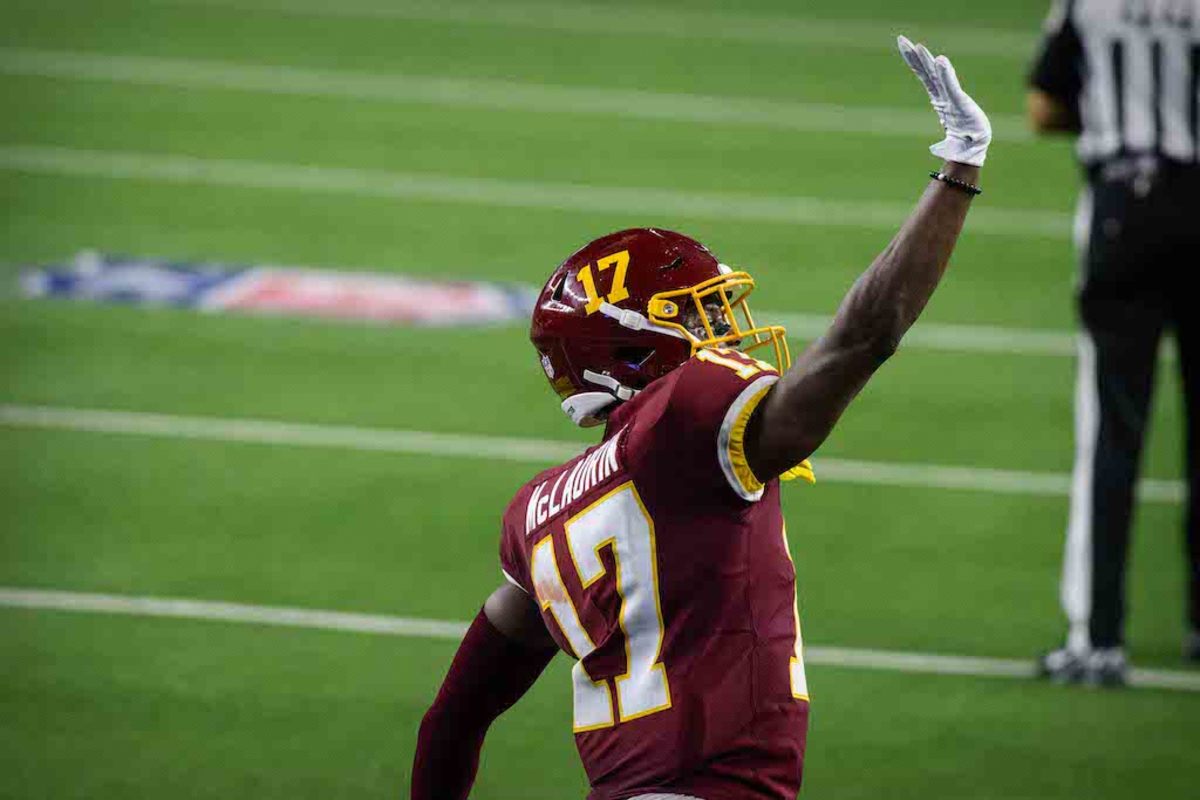
Two seasons into his NFL career, McLaurin has 145 catches for 2,037 yards and 11 touchdowns on 227 targets over 29 games. He already has 32 catches over 20 yards, with six of those catches hitting the 40-yard mark.
In 2020, Washington gave him more chances over the short-areas of the field, leading a step back in his yards per catch (12.9 – 15.8 in 2019). His bump in opportunity led to nine games with seven catches or more. McLaurin had a fantastic start to the year over 11 games (69/963/3 – 16.9 FPPG in PPR leagues) with strength in his catch rate (67.6).
Washington struggled to get him the ball in Week 13 (2/14) and Week 14 (2/24) while also missed Week 16 with an ankle issue. He finished with four 20-plus fantasy games (7/125/1, 10/118, 7/90/1, and 7/115/1) in PPR leagues.
Fantasy Outlook: There is no doubt that McLaurin is a much better player than expected coming into the NFL based on his college resume (75/1,251/19 on 113 targets over 38 games). His ceiling would be much higher with better quarterback play. If Ryan Fitzpatrick starts, he will give McLaurin plenty of chances of jump ball chances. On a path to be a 100-catch receiver with plenty of explosiveness, his ADP (34) makes him a top 12 wide receiver drafted. I love McLaurin's direction, but trusting the quarterback play in Washington will push some fantasy owners in a different direction.
Curtis Samuel
It took four seasons for Samuel to shine in the NFL. Carolina drafted him in the second round in 2017 after a dominating season at Ohio State (1,636 combined yards with 15 touchdowns and 97 catches). He worked in a split role at running back and receiver.
His catch rate (55.1) came up short over his first three seasons before pushing to an elite level in 2020 (79.4). He finished with a career-high in catches (77), receiver yards (851), and rushing yards (200).
Samuel had a quiet start to the year over five games (19/246) while also missing Week 6 with a knee issue. Over his final 10 starts, he gained 805 yards with five touchdowns and 58 catches (16.9 FPPG).
Fantasy Outlook: After finishing 24th in wide receiver scoring (212.10 fantasy points) in PPR leagues, Samuel comes off the board as the 39th in wideout with an ADP of 95. Washington should use him in a similar role as last year, leading to touches out of the backfield and WR2 targets. Samuel will hurt the passing opportunity for J.D. McKissic. My starting point is 65 catches with 900 combined yards and a handful of scores while understanding his ceiling is much higher.
Adam Humphries
Over the past two seasons, Humphries only had a combined 60 catches for 602 yards and four touchdowns on 82 targets. He missed 13 games over this stretch. When on top of his game in 2017 and 2018, Humphries finished with two productive years (61/631/1 and 76/816/5).
Fantasy Outlook: Washington will use him in a possession type of role in 2021, but he isn’t a lock to win the WR3 job.
Antonio Gandy-Golden
Overall, he needs more overall development in his foundation route running, but his game did show growth in 2019. Over his two seasons at Liberty, Gandy-Golden caught 150 passes for 2,433 yards and 20 touchdowns, with his best success coming in 2020 (79/1,396/10).
From a size (6’4” and 225 lbs.) and strength (22 reps in the bench press at the NFL combine in 2020) perspective, Gandy-Golden looks ready to compete at the next level. His change of direction quickness hurts him when asked to work the short areas of the field or on comeback routes. Gandy-Golden does show a better release than expected with the ability to create after the snap when moving forward. He’ll threaten to score in the red zone with the talent to high-ball contested catches.
Dyami Brown
Brown gained over 1,000 yards in his final two seasons (51/1,034/12 and 55/1,099/8) at North Carolina, leading to an impressive 20.1 yards per catch. His catch rate (60.2) needs work, but this distance of his targets was part of his weakness.
Washington will use him in a play-action role early in his career. Brown needs to prove his worth in traffic with his hands.
Cam Sims
In his third season with Washington, Sims came off the bench to catch 32 of his 49 targets for 477 yards and one touchdown. He gained 20 yards or more on nine plays while offering three productive games (3/110, 5/92, and 7/104).
Sims finished his college career with only 41 catches for 467 yards and two scores. His size (6’5” and 220 lbs.) create wins on jump balls, and his speed is better than expected over the long field.
Other Options: Steven Sims, Kelvin Harmon, DeAndre Carter
Tight End

Washington turned to the tight end position late, leading to a jump in catches (75), receiving yards (688), and touchdowns (6). Despite the rise in chances, they gained only 9.2 yards per catch.
Logan Thomas
After kicking around the NFL for four seasons from 2014 to 2019, Thomas broke through for a career season (72/670/6 on 109 targets). Over the first 11 games, he managed only 34 catches for 328 yards and four touchdowns on 60 targets. Thomas gained fewer than 40 yards in eight of those games while offering playable value when scoring (4/37/1, 3/42/1, 4/60/1, and 4/20/1).
The change to Alex Smith at quarterback led to him becoming a relevant fantasy option over the final six weeks (43/416/2 on 58 targets). His best success came in Week 13 (9/98/1) and Week 15 (13/101).
Fantasy Outlook: The success of Thomas in 2020 ranks him eighth at tight end in mid-June with an ADP of 93. His resume is short, but his growth should lead to plenty of chances again this year. These types of players tend to be traps the following year, so I would not fight for him on draft day. Think 60/600/5 while making sure to add a second tight end of value if taking this dance.
Other Options: John Bates, Ricky Seals-Jones, Temarrick Hemingway
Kicker
Dustin Hopkins
Over his six seasons in the NFL, Hopkins made 83.9 percent of his field goals with success over 50 yards (13-for-25). He has nine missed extra points in his 178 chances.
His only relevant season came in 2016 (34-for-42 of his field goals with 36 extra points).
Last year Hopkins made 27 of his 34 field goals while Washington scored 37 touchdowns.
Fantasy Outlook: A defensive style of play should lead to plenty of field goal chances this year. Washington’s offense should improve but struggle in the red zone, leading to Hopkins pushing up the kicker rankings in 2021.
Defense
Washington climbed to 13th in rushing yards allowed (1,805). Ball carriers gained 4.2 yards per rush with 14 touchdowns plus 11 runs over 20 yards.
The Redskins pushed up to second in passing yards allowed (3,068) with 21 touchdowns and 16 touchdowns. Quarterbacks beat them for 36 plays of 20 yards or more while their defense picked up 47 sacks.
DE Montez Sweat
In his first two years in the league after getting drafted in the first round in 2019, Sweat secured 95 tackles, 16 sacks, one interception, and eight defended passes. He ranked highly in run support with a massive improvement rushing the quarterback.
DE Chase Young
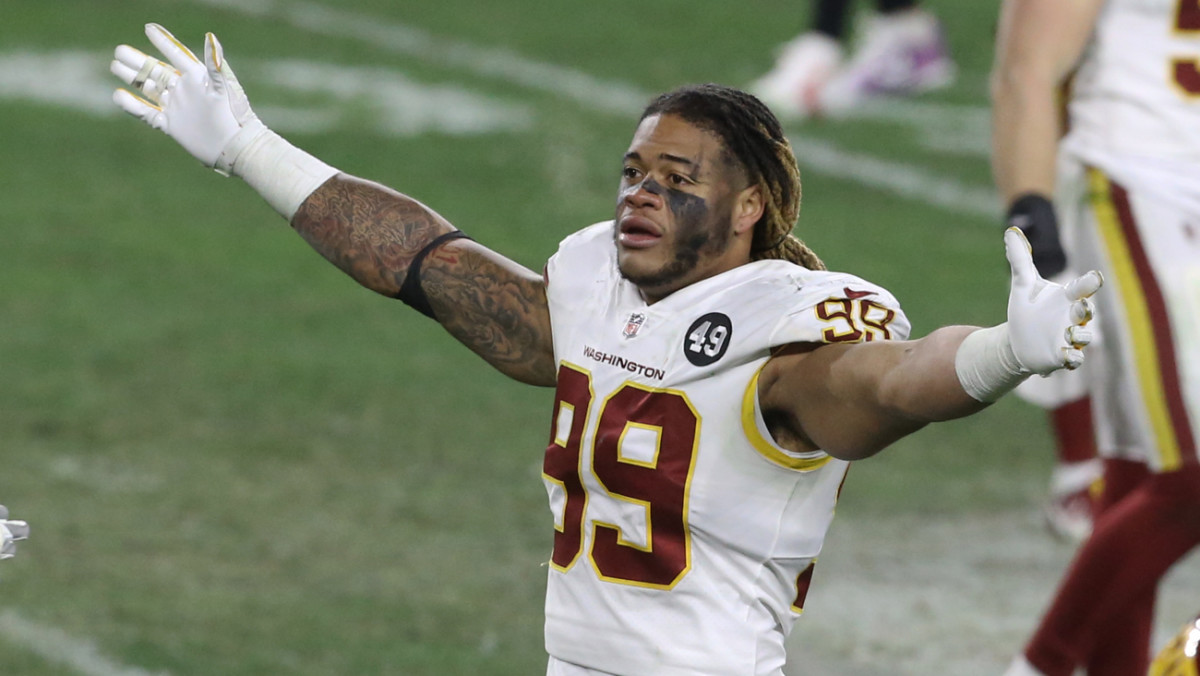
In his first season in the NFL, Young made 44 tackles with 7.5 sacks, four defended passes, one touchdown, and four forced fumbles. His play was exceptional against the run while adding pressure on the quarterback.
Young projects to be an impact pass rusher with a devastating combination of speed, quickness, and athletic ability. Even with a limited foundation in his pass-rushing moves, Young piled up numerous sacks (27) over his last two seasons in college. His game is built on attacking, but he needs to develop more awareness to improve his play in run support.
DT Jonathan Allen
Allen played well over his last three seasons, which led to 192 tackles and 18 sacks after getting drafted in the first round in 2017. His game lost momentum vs. the run over the previous two years.
He has the tools to be an outstanding pass rusher with enough vision to help vs. the run. Even with talent, quickness, and athletic ability, Allen does come up short in his size (6’3” and 286 Lbs.) for an interior lineman while lacking the speed to be an impact option on the edge.
DT Daron Payne
Payne picked up 166 tackles, 10 sacks, and nine defended passes over his first three years in the league. Washington drafted 13th overall in the 2018 NFL Draft. Payne played well in run support over the past two seasons.
His game is built on power and strength, pointing to a massive advantage against the run. His follow-through in the pass rush tends to be boring if stalemated at the line of scrimmage. Payne has more speed than initial quickness off the snap.
LB Cole Holcomb
Holcomb missed five games last year with knee and concussion issues. Over his first 27 games in the league, he picked up 177 tackles, 3.5 sacks, and one interception. Holcomb tends to be a league-average player against the run.
LB Jon Bostic
In his two seasons in Washington, Bostic set a career-high in tackles (105 and 118) in both years while continuing to offer minimal upside in the pass rush (four combined sacks). He’s never been a top player while showing risk vs. the run.
LB Jamin Davis
Washington hopes Davis hits the ground running in his rookie season. His attacking window should be open on many plays, thanks to an excellent defensive line in front of him. Davis offers three-down ability with his pass-rushing skills trailing.
CB Kendall Fuller
In his return to Washington, Fuller missed two games. He made 50 tackles with four interceptions and 11 defended passes. Fuller limited receivers to a low catch rate, but they did beat him for five scores. His run defense has been an asset over the past four seasons.
CB William Jackson
Over four seasons with Cincinnati, Jackson held wide receivers to a low catch rate, but the number of big plays against him started to rise in 2019 and 2020. His run defense isn’t ideal while allowing some damage in touchdowns.
S Landon Collins
The move to Washington’s defense in 2019 led to Collins posting his fourth year with over 100 tackles (117) while adding one sack and four defended passes. His season ended after seven games due to a torn Achilles. His best value still comes defending the run despite struggling in 2020. Collins continues to fade in pass coverage.
S Kamren Curl
Curl is a second player added to this defense in 2020 who plays with strength and speed (4.6 forty). His feel for pass routes looks to be an asset. Curl does have risk vs. deep speed, and his change of direction feel isn’t great. He should play well when moving forward in run support. Curl can’t match the quickness of top slot wide receivers.
Despite some scouting shortfalls, Curl made 16 starts in his rookie season. He made 88 tackles with two sacks, three interceptions, four defended passes, and one touchdown. His run defense came up short while missing too many tackles.
Fantasy Outlook: Washington has plenty of talent on their defensive line with developing options at linebacker. Their pass rush has top-of-league upside, which helps close the passing window for quarterbacks. I don’t see an impactful secondary, but the sum of the parts should complement their strength over the first two levels of the defense.
Washington has a top five defense, and they should show more growth in 2021. A fantasy owner can expect plenty of sacks, which should lead to turnovers and potential defensive scores. Last year, they ranked sixth in defensive scoring in the Fantasy Football World Champions.
More Fantasy Team Outlooks:
